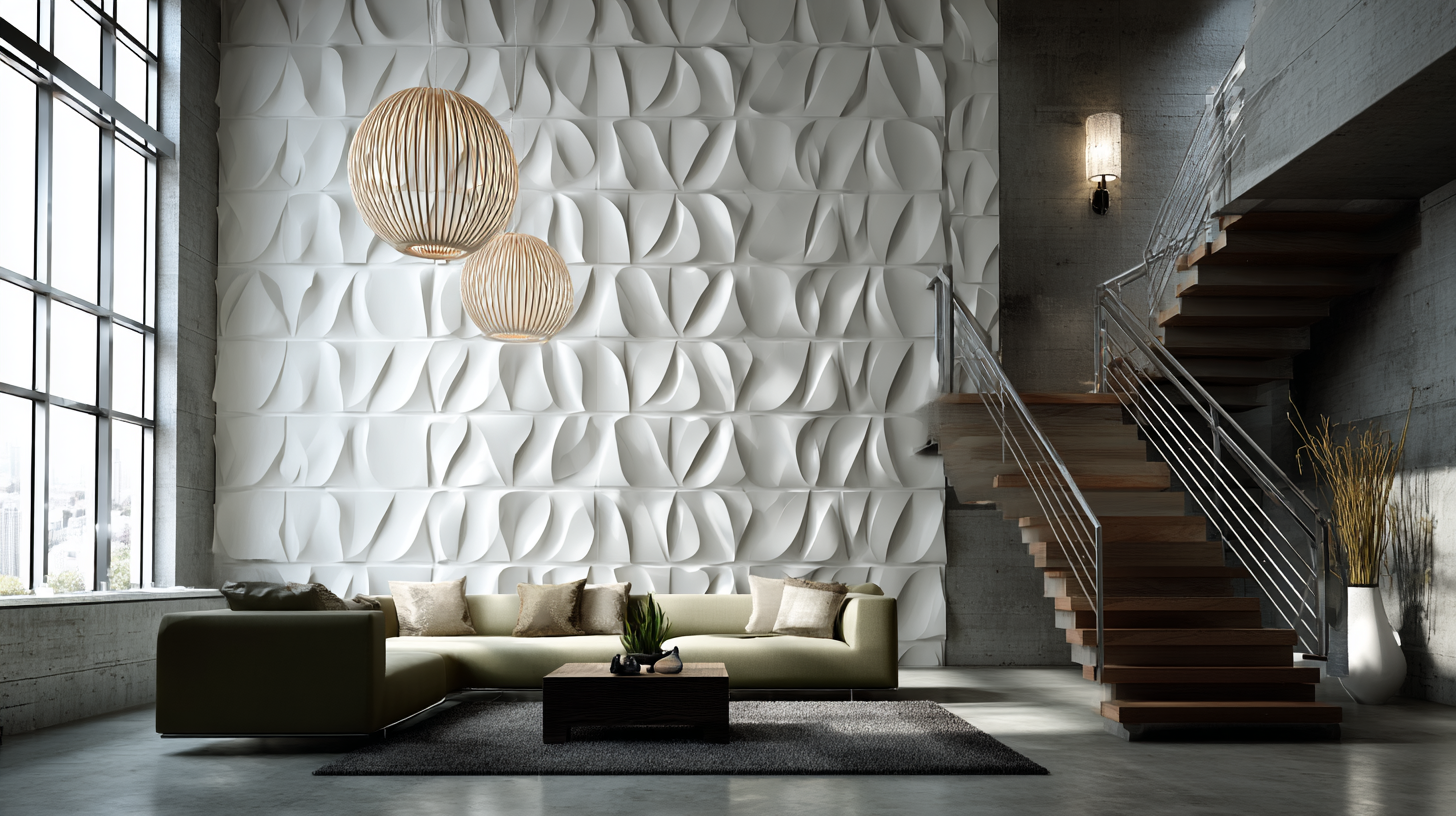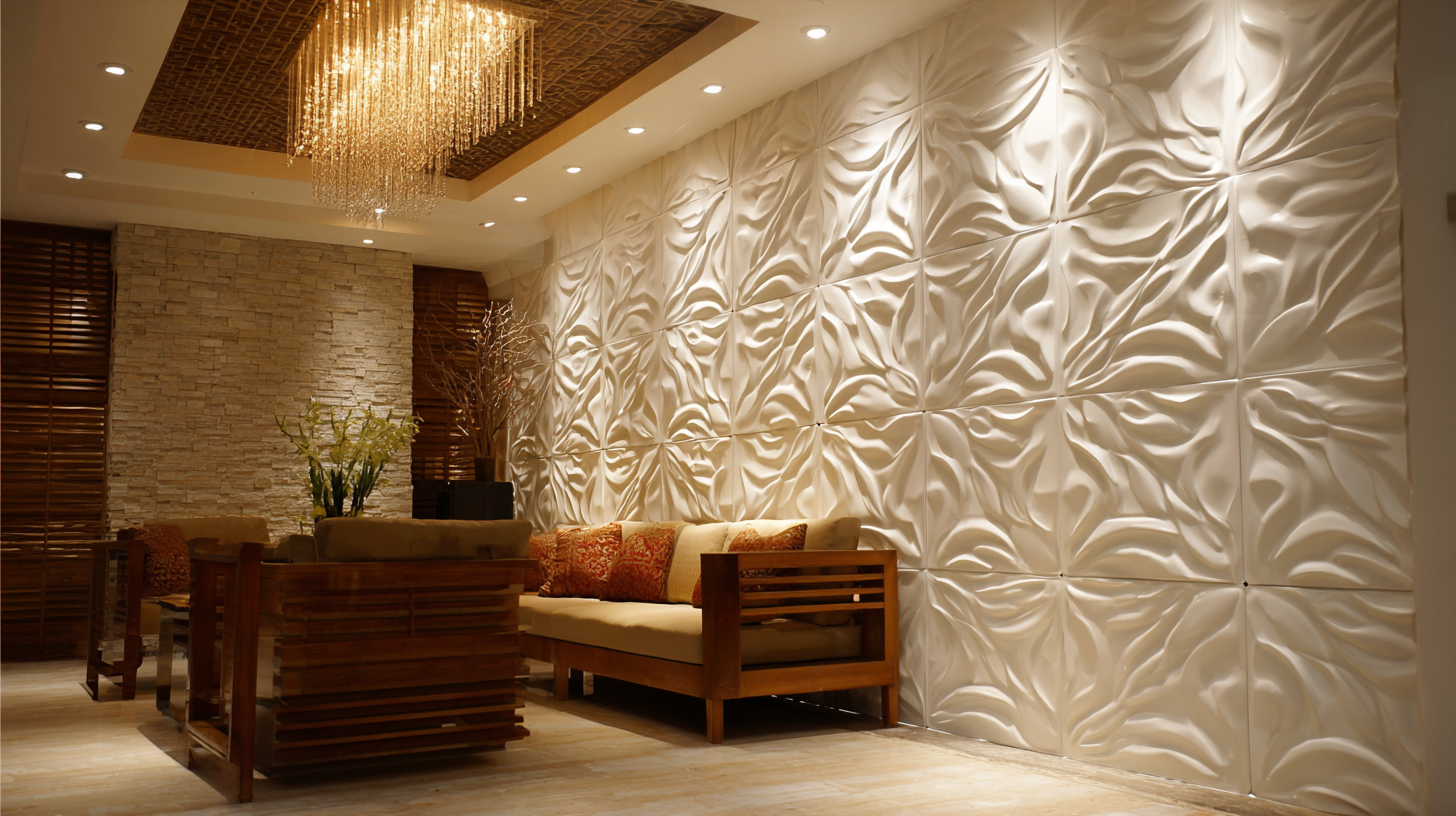As the global demand for sustainable and visually appealing interior solutions skyrockets, China has emerged as a formidable leader in the innovative production of 3D wall panels. According to a market research report by Grand View Research, the global market for decorative wall panels is projected to reach $8.69 billion by 2025, with a significant share attributed to 3D wall panels due to their unique aesthetic appeal and functional advantages. This surge is driven by an increasing emphasis on interior design trends, the growth of the construction industry, and rising consumer preferences for eco-friendly materials. With advanced manufacturing technologies and a wealth of resources, China is at the forefront of this booming industry, continuously enhancing the capabilities and applications of 3D wall panels. This blog will explore key aspects of China's leadership in this sector, highlighting innovations, production techniques, and market opportunities for stakeholders within the industry.

The rise of 3D wall panels is reshaping the landscape of interior design, providing innovative solutions that not only enhance aesthetics but also improve functionality. According to a report by Grand View Research, the global 3D wall panel market was valued at approximately USD 7.98 billion in 2020 and is expected to grow at a CAGR of 18.7% from 2021 to 2028. This surge is largely driven by increasing consumer demand for environmentally friendly building materials and the rapid growth of the construction industry worldwide.
As architects and designers increasingly turn to 3D wall panels for their versatility, these products offer endless possibilities in design, from residential spaces to commercial establishments. The panels are available in various materials, including PVC, wood, and gypsum, allowing for a blend of style and sustainability. Moreover, a recent study published by Transparency Market Research highlighted that the rising trend of integrated smart home designs is further fueling the adoption of 3D wall panels, as they can seamlessly incorporate technology for enhanced living experiences.
With such statistics underscoring the significance of this transformation, it is clear that 3D wall panels are not just a fleeting trend; they are a lasting change in how we conceive and realize interior spaces.
As the demand for sustainable building materials grows, 3D wall panels have emerged as a game-changer in the construction industry. China, at the forefront of this innovation, is producing these panels using advanced technologies that not only enhance design possibilities but also reduce environmental impact. The manufacturing process for 3D wall panels significantly cuts down on waste and energy consumption compared to traditional building materials, making them an eco-friendly choice for modern architecture.
**Tips for Choosing 3D Wall Panels:**
1. Look for panels made from recycled materials to further boost your sustainability efforts.
2. Consider energy-efficient options that provide insulation benefits, helping maintain indoor temperatures and reduce heating and cooling costs.
3. Ensure the panels are durable and require minimal maintenance, which contributes to a lower environmental footprint over the product's lifecycle.
By opting for 3D wall panels, builders and homeowners are not just investing in aesthetic appeal but also taking strides toward a more sustainable future. With China's leadership in this sector, the possibilities for green construction are expanding rapidly, setting a benchmark for countries worldwide.

In the realm of interior design, the demand for personalized spaces has surged, pushing innovative solutions to the forefront. China's prowess in 3D wall panel production is setting new standards, offering numerous customization options that allow consumers to imbue their spaces with unique aesthetics. According to a 2022 market analysis by ResearchAndMarkets, the global demand for customized wall panels is projected to grow at an annual rate of 8.2%, highlighting a shift toward personalized home environments.
The beauty of 3D wall panels lies in their versatility and the multitude of styles, textures, and colors available. Manufacturers are now providing tailored designs that cater to individual tastes, enabling homeowners and businesses alike to curate bespoke rooms. The report from Statista notes that 74% of consumers prefer customizable decor products, reflecting a growing trend where aesthetics and personal expressions are prioritized in the design choices. This customization not only enhances the visual appeal but also elevates the functionality of spaces, making innovative 3D wall panels a popular choice in today's interior design market.
This chart illustrates the growth of 3D wall panel production in China over the past few years. The data shows a consistent increase in production volume, reflecting the country's leadership in innovative designs and customization options in this industry.
In recent years, 3D wall panels have emerged as a groundbreaking solution in the construction and interior design industries. China, at the forefront of this innovation, has perfected the production of these panels, combining aesthetic value with remarkable cost-effectiveness. One of the most compelling advantages of 3D wall panels is their ability to significantly reduce labor costs. Traditional wall-building methods require extensive time for installation and finishing, often involving multiple tradespeople. In contrast, 3D panels can be quickly installed with minimal equipment, allowing for faster project completion and lower overall labor expenses.

Moreover, these panels are engineered for durability and efficiency, which translates into long-term savings for builders and homeowners alike. The lightweight nature of 3D wall panels reduces transportation costs, while their integrated design minimizes the need for additional materials. This synergy of features not only speeds up construction timelines but also optimizes resource usage.
As a result, more projects can be completed with less financial strain, establishing 3D wall panels as a wise investment in both new construction and renovations. By embracing these innovative solutions, stakeholders are not just saving money; they are investing in a sustainable future for the industry.
As China steps to the forefront of innovative 3D wall panel production, technological advances play a pivotal role in transforming this industry. The integration of automation and advanced manufacturing techniques, akin to the strides seen in rammed earth construction for Industry 4.0, is paving the way for higher efficiency and precision. The current progress in lightweight composite structures similarly supports the production of 3D wall panels, offering improved performance while maintaining sustainability. These advancements not only enhance structural integrity but also revolutionize traditional construction practices.
Moreover, 3D printing technology is ushering in a new era of customization across various sectors, including construction. From bespoke wall panel designs tailored to client specifications to the ability to rapidly prototype and produce components, the applications are extensive. This trend is mirrored in other fields, such as orthopedic surgery and agriculture, where novel 3D printing methods are transforming standard practices. As China continues to innovate and push boundaries, the potential for growth within the 3D wall panel sector stands as a testament to the profound impact of technology in modern manufacturing.
| Production Method | Material Type | Energy Efficiency | Market Growth Rate | Sustainability Rating |
|---|---|---|---|---|
| 3D Printing | Recycled Plastics | High | 15% annually | A+ |
| Mold Casting | Concrete | Moderate | 10% annually | B |
| Extrusion | Wood Composites | Low | 7% annually | C+ |
| Injection Molding | Biodegradable Plastics | High | 12% annually | A |
